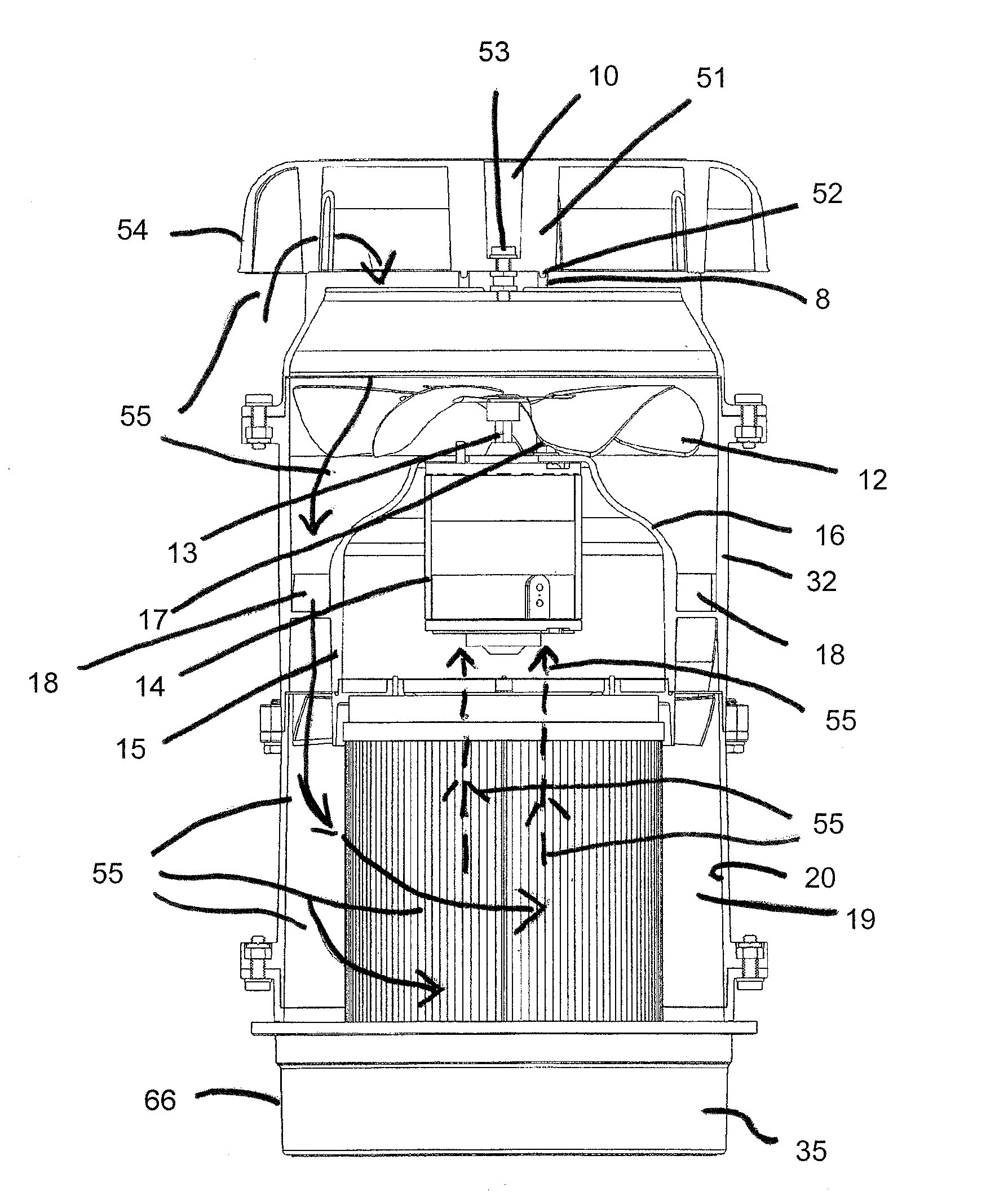Versatile compact air precleaner, air cleaning method and disposable air filter cartridge for air precleaner
a technology of air precleaner and air filter, which is applied in the direction of liquid degasification, separation of dispersed particles, and separation of separation processes, etc., can solve the problems of limiting the application of air precleaners, affecting the time and cost of their manufacture, and too big for limited space applications
- Summary
- Abstract
- Description
- Claims
- Application Information
AI Technical Summary
Benefits of technology
Problems solved by technology
Method used
Image
Examples
Embodiment Construction
[0036]Referring now to the drawings, the powered air precleaner 1 of the disclosed embodiment comprises a flow path shown by the arrows B, B′ and B″ in FIGS. 1 and 6 and arrows 55 in FIG. 12 extending through the system from an inlet 2 to an outlet 3. A motor-driven fan 4 is located along the flow path to draw particulate debris laden air into the inlet and rotate it about a longitudinal axis A-A of the system to form a rotating flow that stratifies the debris laden air with the heaviest particles in the outermost orbits of the rotating flow. Ejector ports 5 and 5′, FIG. 6, are provided in a separator chamber end section 35 of the housing 11 for ejecting particulate debris laden air, B′, from the outermost orbits of the stratified rotating flow in the separator chamber 19 of the air precleaner.
[0037]The powered air precleaner 1 of the illustrated embodiment is equipped with an air inlet screen 6 and optionally a rain cap 7, FIG. 2, for an above-the-hood or other outdoor installation...
PUM
 Login to View More
Login to View More Abstract
Description
Claims
Application Information
 Login to View More
Login to View More - R&D
- Intellectual Property
- Life Sciences
- Materials
- Tech Scout
- Unparalleled Data Quality
- Higher Quality Content
- 60% Fewer Hallucinations
Browse by: Latest US Patents, China's latest patents, Technical Efficacy Thesaurus, Application Domain, Technology Topic, Popular Technical Reports.
© 2025 PatSnap. All rights reserved.Legal|Privacy policy|Modern Slavery Act Transparency Statement|Sitemap|About US| Contact US: help@patsnap.com



